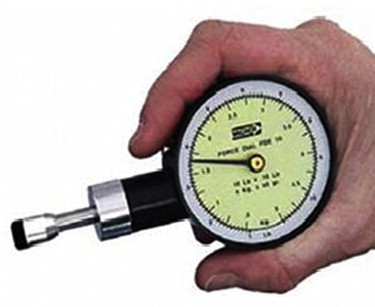Laurie's Blogs.
May 2020
Osteoarthritis and hyperalgesia / allodynia

Human healthcare has been talking about hyperalgesia and allodynia for over decade now. A multitude of studies exist that look testing for increased pain sensitivity and subsequently treatment of pain hypersensitivity. So, it’s exciting when veterinary medicine studies are able to corroborate the same finding in animals. To me, this also means that therapies studied and proven in human medicine, may also transfer to the animal patient (i.e. we can use the best available evidence to guide our treatment choices, which might not yet be formally studied in dogs!)
A nice study crossed my desk recently:
L.K.Harris, H.R.Whay, J.C.Murrell. An investigation of mechanical nociceptive thresholds in dogs with hind limb joint pain compared to healthy control dogs. The Veterinary Journal, Volume 234, April 2018, Pages 85-90.
Essentially the researchers examined a number of dogs: Group A, based on physical examination, subjective history, and scoring on the Helsinki Chronic Pain Index was believed to have osteoarthritis somewhere in a rear limb, and Group B consisted of healthy, sound dogs. The researchers then used a pressure algometer to determine mechanical pressure pain threshold at 5 different sites (right and left radii, right and left stifles, and the sternum). When all things were taken into account (age and body weight) and multiple regression models constructed, the researchers found dogs with presumed osteoarthritis had lower mechanical thresholds at the stifles than control dogs, but not at other sites.
The conclusions were that using a pressure algometer can detect primary, and possibly secondary, hyperalgesia in dogs with presumed osteoarthritis.
Why do you care about this study from a rehab perspective?
1)Perhaps you can use pressure algometry as both an assessment and outcome measure in your evaluation of dogs with osteoarthritis (OA)
2)If you know that dogs with OA have mechanical hypersensitivity then any therapies that can address this issue could be relevant.
3)Directed joint therapies (manual therapies or modalities) could be effective, but so can exercise, so can neural modulation techniques (treating the nervous system), so can techniques that affect relaxation, blood pressure, and sleep (i.e. massage) so can psychosocial aspects (i.e. going for walks, out to sniff, playing with another dog).
So, just one little study that quantifies mechanical nociceptive thresholds give me a whirlwind of ideas for how to help and justification for the multimodal REHAB approach!
Food for thought!
Cheers, Laurie


